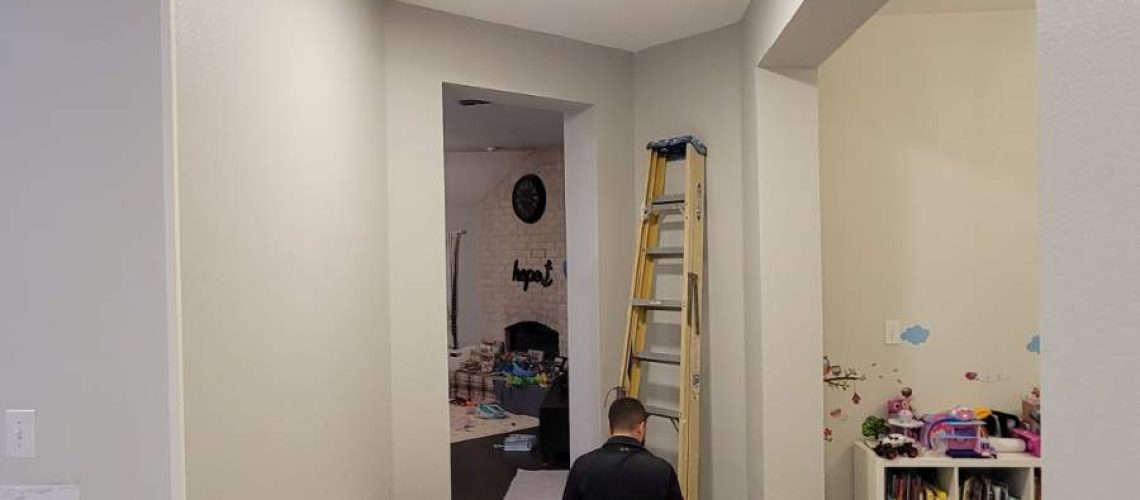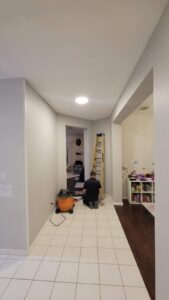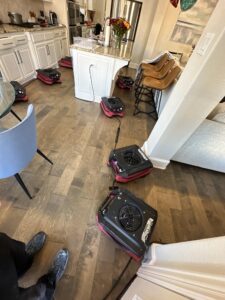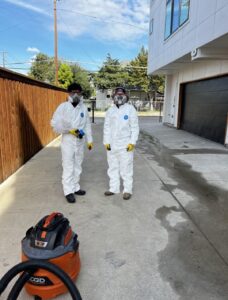At Water Rehab & Restoration, there is something we get asked more often than you might think: “If I wait long enough, will the water damage just dry up and go away?”
We totally get it. When life is busy and water damage doesn’t look “that bad,” it’s tempting to let nature run its course. But we’re here to break the news that leaving water damage alone isn’t just risky. It can lead to much bigger problems down the road.
Key Takeaways
- Water damage does not go away on its own; hidden moisture can lead to serious long-term issues.
- Mold can grow within 24-48 hours of water exposure, causing health and structural problems.
- Drying surface-level water isn’t enough. Moisture often hides in walls, floors, and insulation.
- Ignoring water damage increases repair costs and may void insurance coverage due to neglect.
- Professional water damage services include inspection, drying, dehumidifying, sanitizing, and restoration.
What Is Water Damage?
Water damage refers to any destruction caused when water intrudes into areas where it shouldn’t be. This can affect everything from floors and walls to ceilings, furniture, insulation, and electrical systems.
Water damage does not always appear as dramatic as we might imagine. Sometimes it’s a slow leak under the sink, a damp patch on the ceiling, or a musty smell in the basement. But even the smallest signs can mean that moisture is hiding behind the scenes.
Common Causes of Water Damage
At Water Rehab & Restoration, we’ve seen all kinds of water issues, but the most common causes include:
- Burst pipes or leaking plumbing
- Heavy rainfall and storm flooding
- Roof damage
- Overflowing appliances (like washing machines or dishwashers)
- Clogged gutters and drainage issues
- Sewage backups
No matter the source, one thing holds true: water spreads fast. The longer it sits, the more damage it does.
“Don’t Worry, It’ll Dry on Its Own”
Technically, yes—some water can evaporate over time, especially if the area is well-ventilated and the damage is minor. But here’s the catch: drying doesn’t mean the damage is gone.
Just because a surface looks dry doesn’t mean it is dry. Water often seeps beneath flooring, behind walls, or into insulation. When that happens, you might not see visible signs, but the moisture is still there, silently breaking things down.
What Happens If You Don’t Address Water Damage?
Here’s a look at what can go wrong if you try to wait it out:
1. Mold Growth
This is a big one. Mold can start growing in as little as 24 to 48 hours after water exposure. Once it sets in, it spreads fast and can pose serious health risks, especially for people with asthma, allergies, or compromised immune systems.
2. Structural Damage
Water weakens the structure of your home or building. Wood can rot, drywall can crumble, and foundations can shift or crack. Over time, this leads to costly repairs or even safety hazards.
3. Electrical Hazards
Water and electricity never mix. When water reaches electrical wiring or appliances, it creates a risk of shock or fire. Ignoring it can be extremely dangerous.
4. Warped and Stained Surfaces
Floors can buckle, walls can stain, and paint can peel. These issues may seem cosmetic at first but often point to deeper moisture damage underneath.
5. Unpleasant Odors
If you’ve ever walked into a room that smells musty, you’ve experienced the aftermath of hidden water damage. Trapped moisture creates the perfect breeding ground for bacteria and mold, leading to persistent bad smells that are tough to eliminate.
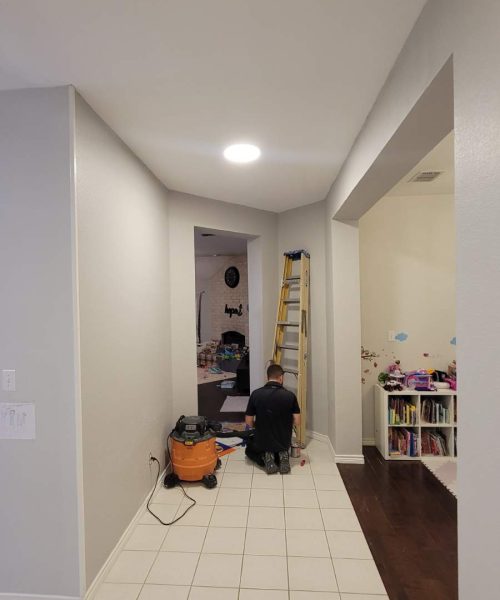
Signs That Water Damage Isn’t Going Away
Still not sure if you have a problem? Keep an eye out for these red flags:
- Warped or buckling floors
- Bubbling or peeling paint
- Musty or damp smells
- Discoloration on ceilings or walls
- Sudden spikes in your water bill
- Sounds of dripping or trickling
Even if things seem minor now, they usually get worse over time. And the longer you wait, the more expensive the fix becomes.
Why DIY Drying Isn’t Enough
We love a good DIY project as much as anyone, but water damage is one area where professional help makes a major difference.
Household Fans and Dehumidifiers Help, But…
Yes, they’ll dry out some of the moisture, but usually just on the surface. You’d be surprised how deep water can get, especially in materials like wood, insulation, or drywall. Without professional-grade equipment, you’re likely leaving behind hidden pockets of moisture.
You Could Be Missing Hidden Trouble
Professionals use moisture meters, infrared cameras, and other tools to detect water behind walls or under floors. These tools help us find and fix problems before they lead to more extensive damage.
The Professional Process: What We Do
When we arrive at a job, we don’t just dry things out. We make sure your home or business is truly safe and restored. Here’s a quick look at our typical process:
Step 1: Assessment
We inspect the affected area and determine how far the water has spread. We also identify the source of the leak and stop it.
Step 2: Water Removal
We use powerful pumps and vacuums to extract standing water quickly. This step is crucial for preventing further damage.
Step 3: Drying and Dehumidifying
Industrial-strength dehumidifiers and air movers are used to remove moisture from walls, floors, and air. We monitor moisture levels throughout the process.
Step 4: Cleaning and Sanitizing
We clean and disinfect surfaces to prevent mold, bacteria, and odors. If the water came from a contaminated source (like a sewage backup), we take extra precautions.
Step 5: Restoration
Once everything is clean and dry, we will ensure that your space is fully restored.
Water Damage Insurance Tip
Most homeowners’ policies cover sudden water damage (like from a burst pipe) but not gradual leaks or problems caused by neglect. The best way to ensure your claim is approved is to act fast and document the damage.
We always recommend taking photos, noting the date of the incident, and calling your insurance provider early in the process. We’re happy to do our part to make sure the process is as simple as possible for you and make sure you get maximum coverage.
When to Call Water Rehab & Restoration
If you’re asking yourself, “Should I call someone about this?” then the answer is probably yes. Water damage can be sneaky, and by the time it’s visible, there’s often more happening behind the scenes.
You don’t need to be in crisis mode to reach out. We offer:
- Damage assessments
- Honest recommendations
- 24/7 emergency service
- Full-service water damage restoration
No pressure. No upselling. Just expert help when you need it.
At Water Rehab & Restoration, we know how overwhelming water damage can be. Whether it’s a minor leak or a major flood, our team is here to help you handle it right the first time so you can get back to living comfortably and safely.
Have questions or think you might have water damage? Don’t wait it out. Let’s take care of it together. Call us today to kick water damage to the curb- for good!

